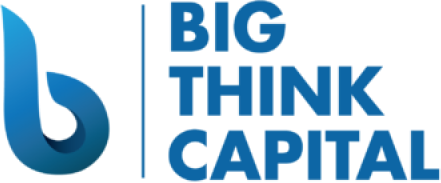Understanding Recent Price Hikes and Their Impact on Small Business Loans in 2025
Estimated reading time: 8 minutes
- Assess your creditworthiness to improve your chances of securing favorable loan terms.
- Explore multiple funding options, keeping recent price hikes in mind when evaluating costs and terms.
- Develop a solid business plan that articulates the purpose and potential ROI of loaned funds.
Table of Contents
- What Recent Price Hikes Mean for Small Businesses in 2025
- Eligibility and Decision Factors for Small Business Owners
- Funding Options Overview Linked to Recent Price Hikes
- How to Evaluate Costs, Terms, and Trade-offs
- Common Pitfalls and How to Avoid Them
- Implementation Checklist for Securing Funds
- Actionable Takeaways
- How Big Think Capital Can Help
- Contact Us
- References
What Recent Price Hikes Mean for Small Businesses in 2025
As we move through 2025, small businesses face a landscape marked by recent price hikes across various sectors. These increases represent significant challenges, particularly when it comes to securing loans and managing operational costs. Whether you run a retail shop, restaurant, or tech startup, understanding these trends is crucial for financing decisions and future planning.
The economic environment is continually shifting, and the ramifications of rising costs can ripple through all aspects of your business operations. Having a proactive strategy in place for securing capital will not only help you navigate these price hikes but also position your business for growth. In this post, we’ll explore what these price hikes mean for small businesses today, the key factors influencing lending decisions, available funding options, and effective strategies for managing associated costs.
The last few years have seen unprecedented fluctuations in prices due to various global and domestic factors. Inflation has forced businesses to adjust their pricing strategies, leading to increased operational costs. As of 2025, these price hikes are evident in materials, labor, and transportation, significantly impacting the financial stability of small businesses. For many small business owners, these hikes can lead to reduced profit margins, making it harder to maintain cash flow. Additionally, as costs rise, the need for financing becomes more pressing. Understanding how to navigate these challenges is essential for ensuring long-term success.
Eligibility and Decision Factors for Small Business Owners
When seeking loans amidst rising prices, several eligibility and decision factors come into play:
- Creditworthiness: Lenders typically evaluate credit scores and history as an indicator of repayment risk.
- Business Age: Established businesses may have an advantage over startups, as they possess a proven track record.
- Cash Flow: Demonstrating a solid cash flow can enhance your chances of approval by showing your ability to repay the loan.
- Collateral: Offering collateral may help secure better loan terms, especially in a tight lending market.
As of 2025, understanding these factors helps business owners prepare for the application process, ensuring they present their businesses in the best light to potential lenders.
Funding Options Overview Linked to Recent Price Hikes
Navigating recent price hikes means actively exploring various funding options that align with your business needs. Here’s a breakdown of common funding avenues:
SBA Loans
SBA loans remain one of the most favorable options for small businesses. These loans offer lower interest rates and longer repayment terms, making them attractive in a higher cost environment.
Working Capital Loans
For businesses needing immediate access to cash, working capital loans can bridge gaps caused by rising expenses. These loans are typically easier to obtain and can be used for any operational costs.
Equipment Financing
When operational costs rise, many businesses look to upgrade equipment to improve efficiency. Equipment financing allows you to purchase or lease assets while spreading the cost over time.
Merchant Cash Advances
Merchant cash advances offer fast access to funds based on future sales. While these can be advantageous during urgent financial needs, they also come with higher costs, making it essential to evaluate them carefully.
Lines of Credit
A line of credit provides flexibility, as it allows you to borrow up to a specific limit when needed. This is particularly useful for managing ongoing operational costs during times of price hikes.
How to Evaluate Costs, Terms, and Trade-offs
Not every loan is created equal, so it’s important to evaluate the costs and terms associated with each funding option:
- Interest Rates: Always compare interest rates across lenders. With recent price hikes, even minor differences can impact your overall repayment.
- Fees: Look beyond the interest rate and consider additional fees, such as origination fees or early repayment penalties.
- Repayment Terms: Consider the repayment schedule. Short-term loans may have higher payments but less interest over time, while long-term loans spread payments out.
- Flexibility: Determine how flexible the lender is with repayment terms and whether moving your payment dates is an option.
Common Pitfalls and How to Avoid Them
Securing funding during times of rising prices can be fraught with mistakes. Here are some common pitfalls and tips on how to avoid them:
- Rushing to Decide: Take your time to explore all options. Rushed decisions can lead to unfavorable loan terms.
- Ignoring the Fine Print: Ensure you read and understand the loan agreement fully before signing. Small details can greatly impact repayment.
- Assuming All Lenders are the Same: Different lenders have different criteria, processing times, and customer services—do your research.
Implementation Checklist for Securing Funds
Here’s a checklist to help streamline your journey to securing funding:
- Evaluate your business’s financial health, including cash flow and credit score.
- Research various loan types that fit your needs and compare lenders.
- Gather necessary documentation (business plan, financial statements, tax returns).
- Prepare a solid business case outlining how funds will be used effectively.
- Apply for loans selectively, based on the best-fit solutions for your business.
Actionable Takeaways
- Assess your creditworthiness to improve your chances of securing favorable loan terms.
- Explore multiple funding options, keeping recent price hikes in mind when evaluating costs and terms.
- Develop a solid business plan that articulates the purpose and potential ROI of loaned funds.
How Big Think Capital Can Help
At Big Think Capital, we specialize in helping small businesses navigate their financing needs, especially during periods of economic uncertainty. With our range of funding solutions and expert guidance, we can assist you in evaluating your options based on the current landscape and organizational goals.
Contact Us
Ready to take the next step? Visit bigthinkcapital.com to learn more about our services or speak with a funding expert today. We are here to help you secure the financing needed to thrive in 2025.
This information is educational and not intended as legal, tax, or investment advice.
References
- SBA Loans Overview (U.S. Small Business Administration, 2025)
- Financial Accounts of the United States (Federal Reserve, 2025)
- The Impact of Inflation on SMEs (National Center for Biotechnology Information, 2020)
- Risk-Based Pricing for Loans Explained (Investopedia, 2025)
- American Business Outlook (The Conference Board, 2025)






